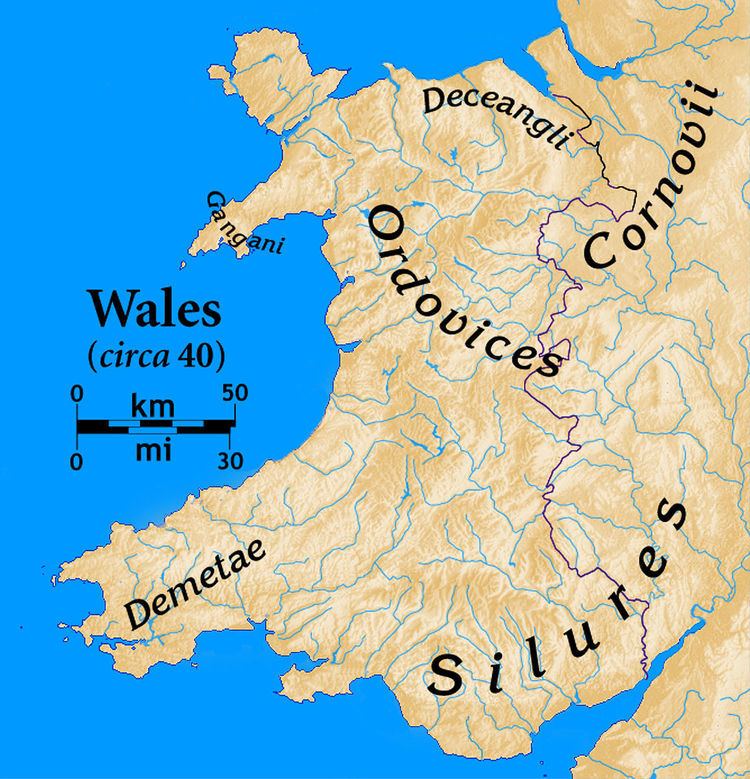 | ||
The Ordovices were one of the Celtic tribes living in Great Britain before the Roman invasion. Their tribal lands were located in present-day North Wales and England between the Silures to the south and the Deceangli to the north-east. The Ordovices were conquered by the Roman governor Gnaeus Julius Agricola in the campaign of AD 77–78.
The Celtic name *ordo-wik- could be cognate with the words for "hammer": Irish 'Ord', Welsh 'Gordd' (with a G- prothetic) and Breton 'Horzh' (with a H- prothetic).
The Ordovices farmed and kept sheep, and built fortified strongholds and hill forts. They were among the few British tribes that resisted the Roman invasion. The resistance was mainly organised by the Celtic leader Caratacus, exiled in their lands after the defeat of his tribe in the Battle of the Medway. Caratacus became the warlord of the Ordovices and neighbouring Silures, and a Roman public enemy in the 50s AD. Following the Battle of Caer Caradoc, where governor Publius Ostorius Scapula defeated Caratacus, the Ordovices were no longer a threat to Rome, probably due to heavy losses.
In the 70s, the Ordovices rebelled against Roman occupation and destroyed a cavalry squadron. This act of war provoked an equally strong response from Agricola, who, according to Tacitus, exterminated almost the whole tribe. No other mention of the tribe appears in the historical records, but in view of the mountainous terrain of the lands of the Ordovices, it is questionable whether Agricola could have wiped out the entire population.
The name of this tribe appears to be preserved in the place name Dinorwig ("Fort of the Ordovices") in North Wales.
The Ordovician geological period was first described by Charles Lapworth in 1879, based on rocks located in the lands of the Ordovices.
